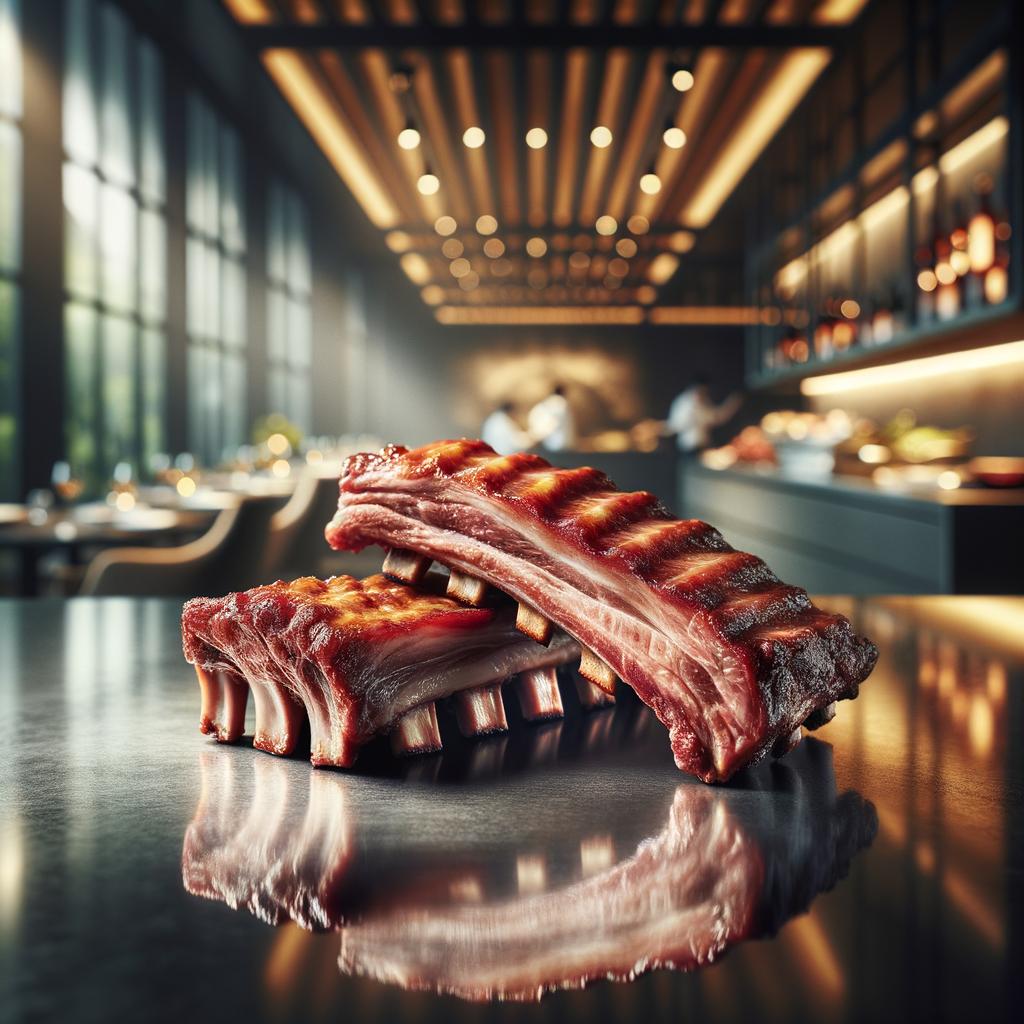Pork Ribs

Pork Ribs
Description Pork ribs, a cut of pork popular across the globe, are a succulent and hearty ingredient that bring warmth and comfort to many dishes. These ribs, coming from the loin or side of the pig, have a unique curvature that gives them their distinctive shape. They are characterized by their rich, marbled meat interlaced with layers of fat, which renders down during cooking to create an incredibly tender and flavorful result. The meat itself is a soft pink, turning to a beautiful golden brown when cooked. The flavor profile of pork ribs is robust and savory, with a subtle sweetness that sets it apart from other cuts of pork.
Primary Uses Pork ribs are incredibly versatile in cooking, often slow-cooked, smoked, grilled, or baked to achieve a fall-off-the-bone tenderness. They are a key component in many cuisines, from the smoky barbecue ribs of the American South, the sweet and sticky char siu in Chinese cuisine, to the hearty pork rib stew in Korean households. Outside the culinary world, pork ribs also hold cultural significance in many societies, often being used in celebratory meals and gatherings.
History The history of pork ribs is as rich and varied as the dishes they are used in. In the United States, the tradition of barbecuing ribs can be traced back to Native American cooking methods, which were then adopted and adapted by European settlers. In China, char siu has been a staple in Cantonese cuisine for centuries. The use and popularity of pork ribs have evolved over time, with different regions developing their own unique methods of preparation and seasoning. An intriguing folklore associated with pork ribs is the Southern tradition of eating pork on New Year's Day to bring good luck and prosperity for the year ahead.
Nutritional Information Pork ribs are a good source of protein, essential for muscle growth and repair. They also provide key vitamins and minerals including Vitamin B12, zinc, and selenium. However, due to the marbled fat within the ribs, they are high in calories and saturated fats. When compared to leaner cuts of pork, ribs have a higher fat content, but this is what contributes to their flavor and tenderness. As with all foods, moderation is key, and when consumed as part of a balanced diet, pork ribs can certainly be part of a healthy meal.

